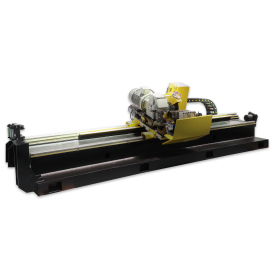[Induction heating]Exploring Induction Heating: A Revolutionary Technology for Efficient Heating Solutions in Industrial and Domestic Applications
News 2024-12-2
Induction heating is a transformative technology that uses electromagnetic fields to generate heat in conductive materials without direct contact. This method has gained momentum in various industries, from manufacturing to cooking, due to its efficiency and precision. In this article, we'll explore the principles behind induction heating, its advantages, various applications, and the future of this innovative heating solution.
Understanding the Principles of Induction Heating
At the core of induction heating is Faraday's Law of Electromagnetic Induction, which states that a change in magnetic field within a closed loop induces an electric current. An induction heating system typically consists of an induction coil, a power source, and the workpiece to be heated.
When alternating current (AC) flows through the coil, it creates a fluctuating magnetic field. When a conductive material (such as metal) is placed within this field, electrical currents, known as eddy currents, are induced within the material itself. This process generates heat due to the resistance of the material to the flow of these currents. The amount of heat produced is determined by several factors, including the material's resistivity, the frequency of the electric current, and the proximity of the induction coil to the workpiece.
Advantages of Induction Heating
Induction heating offers several advantages over traditional heating methods:
1. **Efficiency**: One of the most significant benefits of induction heating is its high efficiency. It heats materials directly, requiring less energy and reducing heat loss to the environment. Typical energy efficiency rates can exceed 90%, whereas traditional methods may only achieve 30-60% efficiency.
2. **Speed**: Induction heating is incredibly fast. The ability to heat materials quickly makes it ideal for processes requiring rapid temperature changes, such as hardening, soldering, and brazing.
3. **Precision**: This technology allows for precise control over the heating process. Operators can specify exact temperatures and heating times, improving the consistency of results and significantly reducing the risk of overheating.

Exploring Induction Heating: A Revolutionary Technology for Efficient Heating Solutions in Industrial and Domestic Applications

Exploring Induction Heating: A Revolutionary Technology for Efficient Heating Solutions in Industrial and Domestic Applications
Applications of Induction Heating
The versatility of induction heating has led to its adoption in many areas:
- **Metal Hardening**: Induction heating is widely used in the steel and metallurgy industries to harden metal surfaces, enhancing durability and wear resistance.
- **Brazing and Soldering**: This method is employed for joining metals together by melting a filler metal. Induction heating provides the necessary heat precisely where it is needed.
- **Cooking Appliances**: Induction cooktops utilize this technology to provide efficient cooking solutions, allowing for quicker cooking times without heating the entire kitchen.
- **Plastic and Polymer Processing**: Induction heating can heat metals used in molds and dies for plastic manufacturing, expediting the molding process without directly heating the plastic itself.
- **Heat Treatment**: Industries often utilize induction heating for heat treating components in automotive and aerospace applications to enhance physical properties such as toughness and ductility.
The Future of Induction Heating
As technology advances, the future of induction heating looks promising. Innovations such as higher-frequency systems and better coil designs will further improve efficiency and effectiveness. Additionally, incorporating induction heating into smart manufacturing processes and Industry 4.0 paradigms will enable real-time monitoring and greater automation, enhancing overall productivity.

